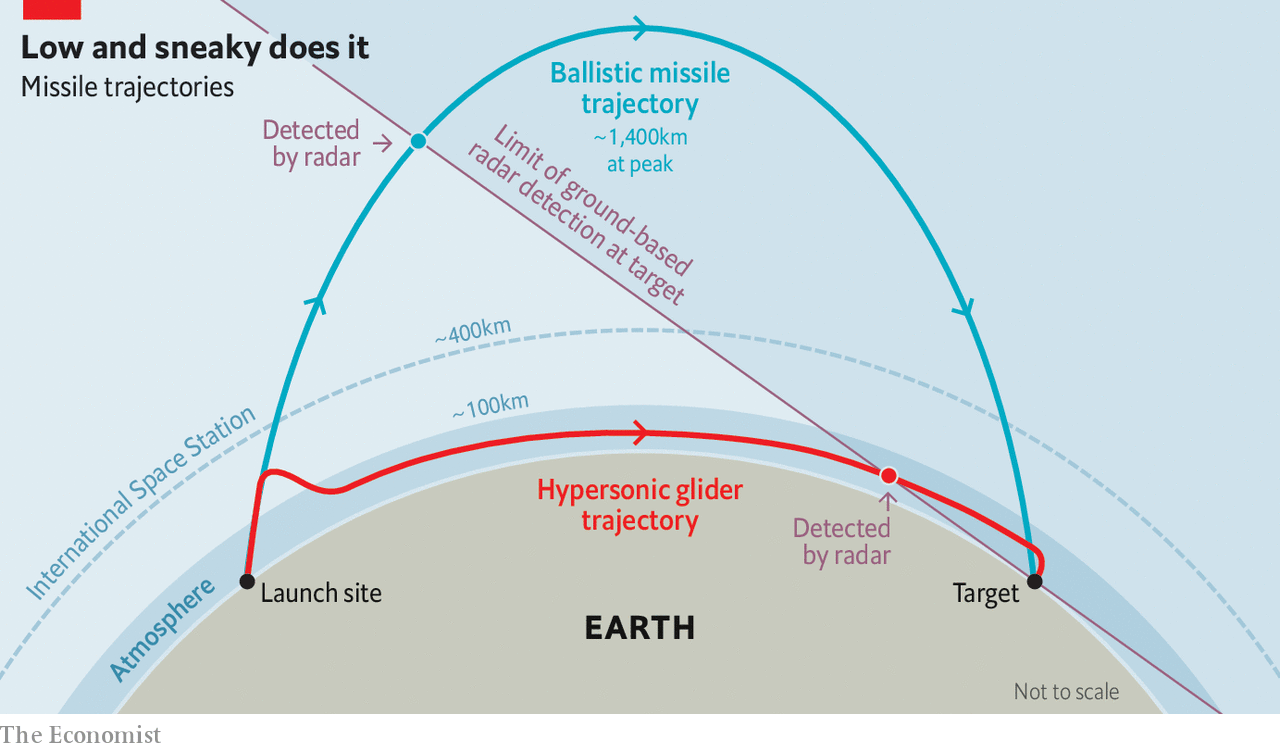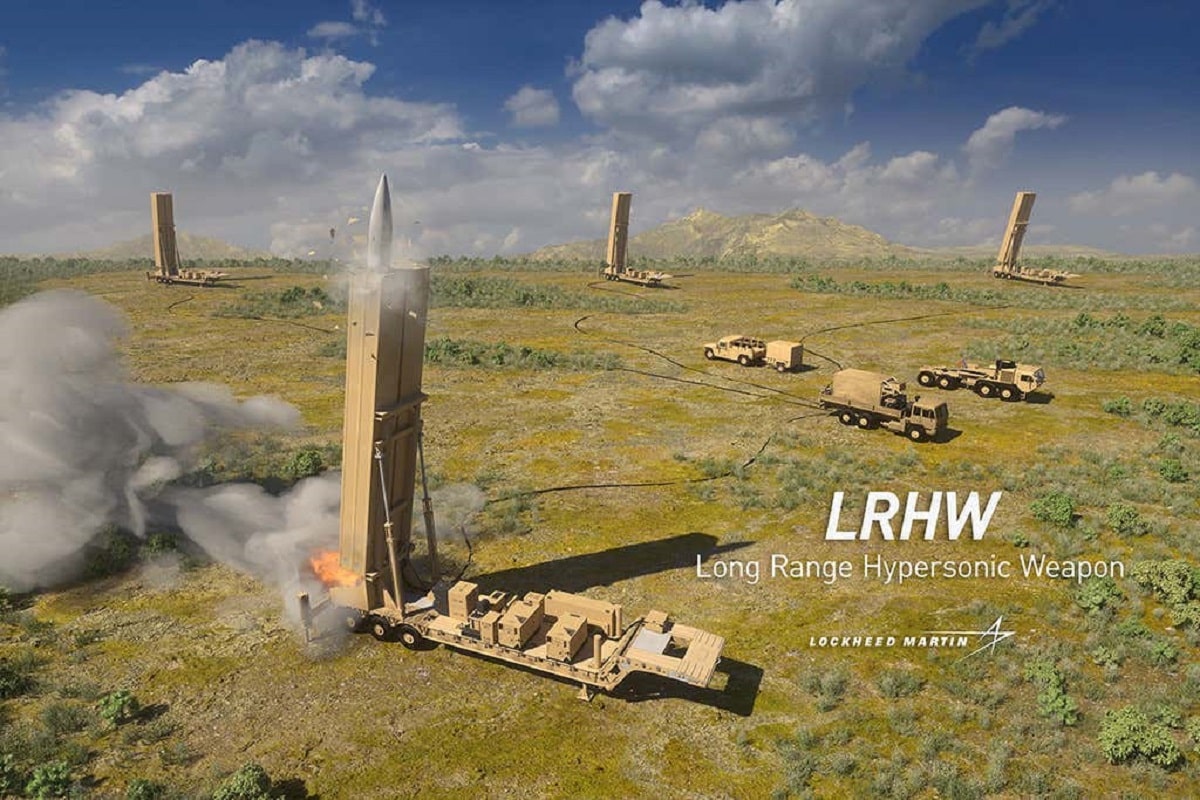Table Of Content

Our analysis indicates that currently deployed U.S. satellites would be capable of detecting and tracking gliders traveling through the atmosphere at speeds covering most of the hypersonic regime. When John Glenn came back to Earth in 1962 from the first U.S. crewed flight around the Earth, his capsule entered the atmosphere at hypersonic speed. All of the intercontinental ballistic missiles in the world’s nuclear arsenals are hypersonic, reaching about 15,000 mph (24,140 kph), or about 4 miles (6.4 km) per second at their maximum velocity. Significantly enhancing L/D, if possible, would reduce the technical barriers to long-range hypersonic flight. Theoretically, “waverider” designs can increase the L/D values of hypersonic vehicles to six or higher.
Hundreds light candles for victims of Bondi stabbing attack as injured baby discharged from hospital
U.S. officials have said that while there are some ground-based radars that can detect hypersonic weapons, there are not enough to give adequate warning of an attack. Officials, like the now-retired Hyten, have advocated the construction of a space-based radar system. Militaries have pursued hypersonic aircraft for almost a century, though with limited success. In the late 1930s Austrian engineer Eugen Sänger and German physicist Irene Bredt designed the first hypersonic aircraft, a glider called the Silbervogel. It was to be launched from a rocket, fly primarily within the atmosphere and, like any other glider, stay aloft using aerodynamic lift, but Nazi planners decided it would be too difficult and expensive to build.
Russia
(The U.S. and other countries are also working to build hypersonic cruise missiles, but their engines are still under development.) Yet our studies indicate that hypersonic gliders encounter severe challenges. Hypersonic weapons are often said to reduce the time needed to deliver a warhead, but this claim is largely based on a misleading comparison with subsonic cruise missiles or with ballistic missiles on longer trajectories. The most energy-efficient path for a ballistic missile, called a minimum-energy trajectory, sends a warhead arcing high above Earth before it falls to its target. The warhead avoids atmospheric drag over most of its flight but follows a much longer path than a hypersonic glider would, so it can take somewhat longer to reach the same target. In the early 2010s the U.S. flight-tested a long-range glider, the Hypersonic Technology Vehicle 2 (HTV-2).
Three types of hypersonic missiles
Israel's Missile Defense Was Amazing. It'll Get Harder. - Bloomberg
Israel's Missile Defense Was Amazing. It'll Get Harder..
Posted: Mon, 15 Apr 2024 17:38:54 GMT [source]
Today the fastest official speed for a piloted jet aircraft stands at approximately Mach 3, which the Lockheed SR-71 Blackbird reached in July 1976. Jet engines also power cruise missiles—maneuverable and pilotless aircraft, the fastest of which can achieve supersonic speeds. Hypersonic weapons fly at speeds of at least Mach 5 and are highly maneuverable and able to change course during flight.


(A glider turns by banking or otherwise inducing a horizontal component of the lift force.) As it happens, lift is also proportional to the square of the velocity. The ratio of the lift force, L, to the drag force, D, is called the lift-to-drag ratio, L/D, a key marker of a glider’s performance. If Russia ever operates this system against an enemy, that country would have to decide the probability of the weapon being conventional or nuclear. The recent tests are the moves in a dangerous arms race in which smaller Asian nations are striving to develop advanced long-range missiles, alongside major military powers.
Is Asia's space race also an arms race?
Most U.S. hypersonic weapons are still in the development or testing phase, but at least one system is expected to reach early operational capability this year. HACM is a hypersonic weapon, which means it flies at Mach 5 or faster—but we don’t know exactly how much faster it will fly. Most missiles that remain in the atmosphere, like air-to-air missiles, top out at around Mach 3+. SCIFiRE was descended from the earlier HIFiRE program, which tested a scramjet engine at speeds up to Mach 8.
Hypersonic weapon
They are different from ballistic missiles, which can also travel at hypersonic speeds (of at least Mach 5) but have set trajectories and limited maneuverability. To change direction, a hypersonic glider must use lift forces to impart a horizontal velocity—which might itself have to be hypersonic. For example, to turn by 30 degrees, a glider flying at Mach 15, or 4.5 kilometers per second, must generate a horizontal velocity of Mach 7.5, or 2.3 kilometers per second. (Because the speed of sound changes with density and altitude, flight engineers often take Mach 1 to be about 300 meters per second, and so do we.) At the same time, the glider must retain enough vertical lift to stay aloft.
Our studies indicate that hypersonic weapons may have advantages in certain scenarios, but by no means do they constitute a revolution. And yet the widespread perception that hypersonic weapons are a game-changer has increased tensions among the U.S., Russia and China, driving a new arms race and escalating the chances of conflict. In the case of the U.S., if the determination were made that the weapon was nuclear, then there is a very high likelihood that the U.S. would consider this a first strike attack and respond by unloading its nuclear weapons on Russia. The hypersonic speed of these weapons increases the precariousness of the situation because the time for any last-minute diplomatic resolution would be severely reduced. The ability to launch highly maneuverable weapons at hypersonic speeds gives any country a considerable advantage, because such weapons can evade just about any defense system currently in use. The glide vehicle then separates from the rocket and “glides” at speeds of at least Mach 5 toward a target.
'He's not even looking at me': Ricciardo fumes as Stroll crash ends his race in China
Being able to take out such a target could have a significant impact on the outcome of a major conflict. A second important challenge stems from the fact that they operate in a different region of the atmosphere from other existing threats. The new hypersonic weapons fly much higher than slower subsonic missiles but much lower than intercontinental ballistic missiles. The U.S. and its allies do not have good tracking coverage for this in-between region, nor does Russia or China. Another common claim is that because gliders travel at lower altitudes than a ballistic warhead, they would be “nearly invisible” to early-warning systems. But both the U.S. and Russia have early-warning satellites with sensitive infrared sensors that could spot the intense light that gliders emit because of their extreme temperatures.
The strong g-forces produced by rocket engines placed extreme demands on human physiology, so piloted rocket-propelled aircraft never became more than experiments. But rocket technology enabled the U.S. and the Soviet Union to build arsenals of nuclear-armed ballistic missiles that are boosted to more than Mach 20 to reach across continents. Another technology developed in this era, the jet engine, became the workhorse of military and commercial travel, however. Drawing in atmospheric oxygen to continuously burn fuel, a jet engine does not carry the extra weight of an oxidizer. It enables long-distance transport and maneuverability without the extreme acceleration of rocket engines.
However, hypersonic missiles are expensive and therefore not likely to be produced in large quantities. As seen in the recent use by Russia, hypersonic weapons are not necessarily a silver bullet that ends a conflict. A hypersonic glide vehicle is boosted on a rocket to high altitude and then glides to its target, maneuvering along the way. Examples of hypersonic glide vehicles include China’s Dongfeng-17, Russia’s Avangard and the U.S. U.S. officials have expressed concern that China’s hypersonic glide vehicle technology is further advanced than the U.S. system. ICBMs are launched on large rockets and then fly on a predictable trajectory that takes them out of the atmosphere into space and then back into the atmosphere again.
Heating remains a major challenge because the surface temperature of a vehicle falls rather slowly with increases in L/D. Our calculations show, for example, that increasing L/D from 2.6, the value that the HTV-2 achieved, to 6 would reduce a glider’s surface temperature at a given speed by at most 15 percent. Preventing material damage during long-range flights would therefore still be difficult. Such an increase in L/D would also reduce the infrared signature of a missile and potentially increase the speed at which it could fly undetected (by current satellites) to up to Mach 7. Increasing L/D could in addition provide somewhat higher maneuverability—but that could be more easily boosted by relatively small increases in a glider’s initial speed.
The U.S. is starting to develop a layered approach to defending against hypersonic weapons that includes a constellation of sensors in space and close cooperation with key allies. Russia used a hypersonic missile against a Ukrainian arms depot in the western part of the country on March 18, 2022. That might sound scary, but the technology the Russians used is not particularly advanced. However, next-generation hypersonic missiles that Russia, China and the U.S. are developing do pose a significant threat to national and global security. Australia, India, France, Germany and Japan are developing hypersonic weapon technology. Iran, Israel and South Korea are also reported to have done what has been described as “foundational research” on hypersonic weapons.
Moreover, the ability to penetrate defensive shields is not unique to hypersonic gliders. Interceptors that operate outside the atmosphere are particularly vulnerable to being fooled by decoys and other countermeasures, which Russia and China have developed and likely deployed. Ballistic missiles of short and medium range, launched from an aircraft, could fly at altitudes low enough to avoid such “exo-atmospheric” defenses. Similarly, equipping ballistic missiles, including missiles of short and medium range, with MaRVs could allow them to outmaneuver and penetrate defenses that operate within the atmosphere. Yet a ballistic missile can instead fly at lower altitude, called a depressed trajectory—long seen as a way of delivering quicker nuclear attacks from submarines.
Proponents say that these weapons are incredibly fast and agile and virtually invisible. Raytheon and Northrop Grumman won a contract worth $985 million to develop the world’s first hypersonic cruise missile. HACM, developed for the United States and Australia, is an air-launched hypersonic cruise missile designed to quickly strike targets on the ground. Under the terms of the contract, the Pentagon should see the first operational missiles in 2027. Like many aircraft, turbofan engines power cruise missiles, propelling them at subsonic speeds.

No comments:
Post a Comment